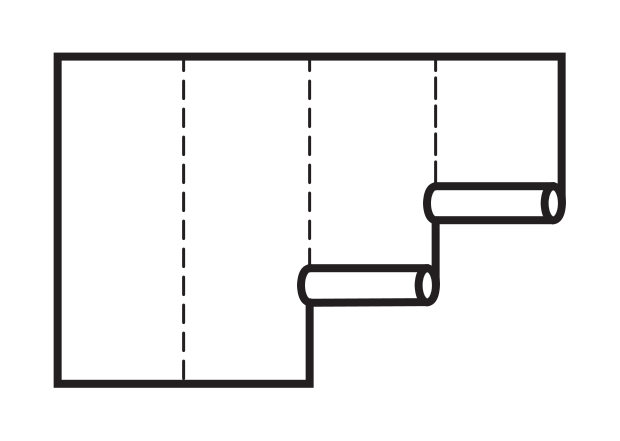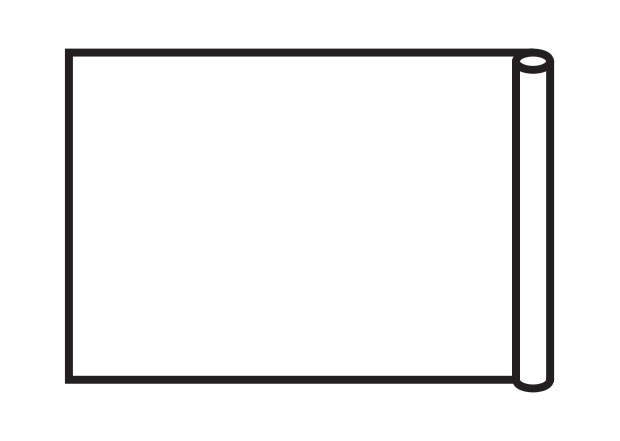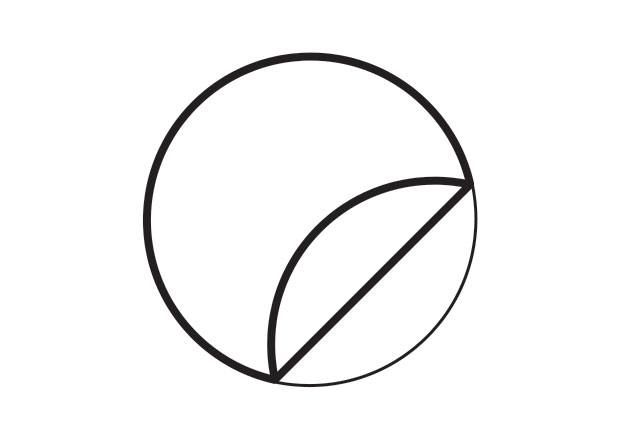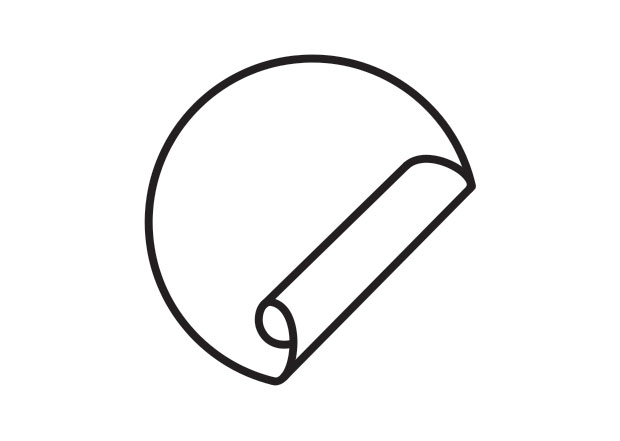MANUALS
On this page you’ll find instructions for the different products.
Please select the type of item you purchased and start the application. Before you know it your room make-over is finished.
Non-woven murals
In lanes
Peel&Stick murals
In lanes
MuralTex murals
In one piece
Peel&Stick circles
Up to 140 cm
MuralTex circles
from 160 cm
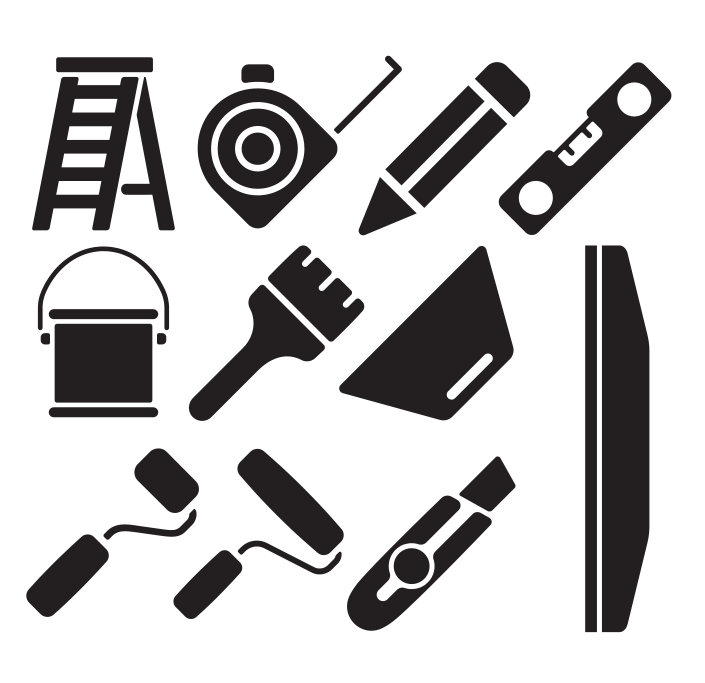
1) Preparation
- Necessary / useful tools: ladder, measuring tape, pensile, spirit level, glue suitable for non-woven wallpaper, block brush or glue roller, spatula, pressure roller, seam roller, knife, cutting ruler.
- To prevent shrinkage, it is recommended to allow the wallpaper to acclimatize for 24 hours before applying it to the wall.
- The optimal temperature to apply the wallpaper is between 18 – 25 ºC and a humidity of about 40% – 65%.
- Ensure the wall / surface is completely flat, clean, dry and smooth. For the best result the wall should be in one color.
- If you are going to a apply the wallpaper to a newly plastered wall, first apply primer and let it dry properly before applying the wallpaper. Otherwise, the glue will not adhere properly, and the wallpaper does not stick.
- If applicable, switch off the electrical groups of any sockets and/or switches that are present on the wall, and remove the frames.
- Cover the floor is cover foil or old newspapers and prepare a sturdy ladder so you can reach every part of the wall.
- Carefully cut open the box and remove the protective packaging from the rolls. Unroll the wallpaper to check if everything is in order. Prepare the lanes in the correct order. You can find the numbers of the lanes at the bottom of the wallpaper or at the back. The lanes are numbered from left to right.

2) Application
- The lanes are numbered from left to right, so start on the left side of the wall.
- To make sure the wallpaper is hung level it is advised to draw a line on the wall as a guide or the first lane.
Measuring the width of the wallpaper lanes and deduct about half of the margin you added when ordering. Use the measuring tape and the pencil to make a marking on the wall at this amount.
Example: if you added 10 cm extra length and the lane width is 50 cm, mark 50 – (10/2) = 45 cm from the side you want to start with. This way you leave some margin in case the wall in not completely straight. - Use a spirit level and long ruler to draw the vertical line from the mark.
- Make sure you use a pencil and dwarl a thin soft line. A thick line made by a marker or pen may shine through the wallpaper.

- Prepare the wallpaper glue according to the specifications on the packaging of the glue.
- Apply glue for the first wallpaper lane. Use a block brush or wallpaper glue roller to apply the glue to the wall (not to the wallpaper).
- Applythe glue a little wider than the level line.

- Now you can start with the first wallpaper lane. Work from top to bottom.
- If you added margin when ordering, keep about half of the margin on top. This way you leave some margin in case the wall in not completely straight.
- Place the first wallpaper strip straight along the level line. Applying it straight is very important, because the following strips will match nicely.
- Press the wallpaper to the wall firmly using a wallpaper spatula or wallpaper pressure roller and smooth it out from top to bottom. Make sure there as few air bubbles as possible. If there are too many bubbles, pull the wallpaper loose and apply again.
Small air bubbles will disappear when it dries up. Larger air bubble could be removed by making a small puncture with a pin and then wipe the air out with the spatula, but better to prevent large air bubbles.
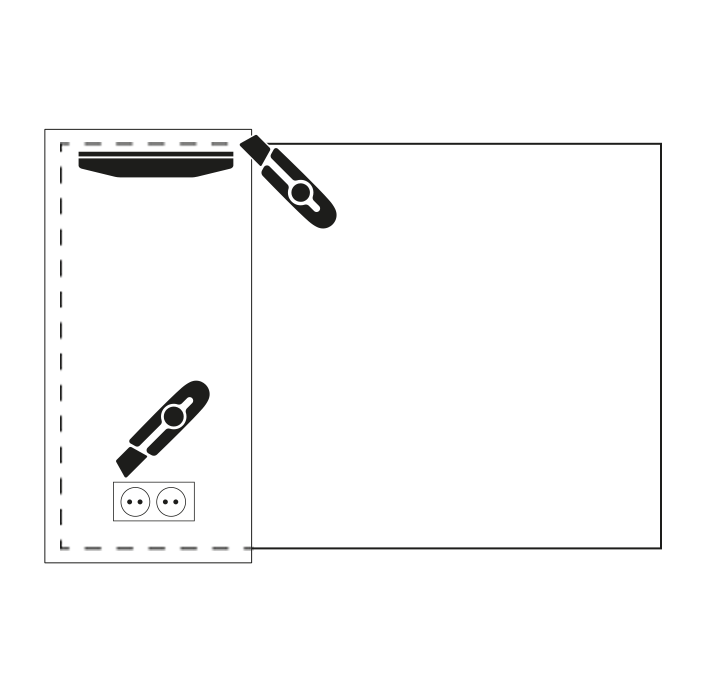
- In the corners press the wallpaper extra firmly to get a clear folding line. This will make it easier to cut the extra wallpaper later on.
- Cut off the edges preferably using a long (cutting) ruler.
- Do you have to apply wallpaper around a window, door or other obstacle, then first apply all the lanes over it. Then cut it to size bit by bit untill the object is cleared. So do not try to cut it out in one go.
- Cut out any sockets.
- Remove excess glue with a dry cloth.

- Place the next lane straight against the first lane and repleat all steps above.
- Do not overlap any of the lanes but position tightly against each other.
- Make sure to remove as much air behind the wallpaper as possible using a wallpaper spatula or wallpaper pressure roller.

3) Finishing
- Check all the edges and seams and make sure they stick properly. Securely press the corners and edges with the spatula to prevent air coming under it. You can use a seam roller to make the transitions between the lanes even tighter.
- Remove excess glue with a dry cloth.
- Place back any removed frames from the sockets and switches and put the power back on.
- Your wallpaper is ready!

